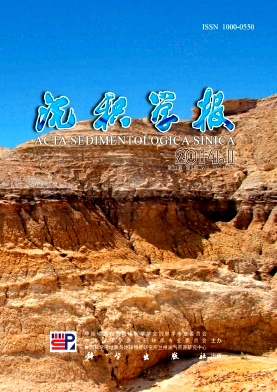Sedimentary Characteristics Since 280 ka B.P. in Gasikule Salt Lake in Western Qaidam Basin
- Publish Date: 2014-02-10
-
Key words:
- Gasikule Salt Lake /
- lithologic feature /
- salinization period /
- sedimentary type /
- sedimentary structure
Abstract: Qaidam Basin develops nearly continuous, integrative and ultra-thick Quaternary sediment sequences. Saline lake deposits are the product of the physic-geographical and geological environments. This paper discussed the sedimentary characteristics of Gasikule Salt Lake where located in the northwestern margin of Qaidam Basin. Brine in the lake belong to magnesium sulphate subtype and halite was the mainly chemical sedimentation. From the studies on cores from 6 boreholes which distributed in the east playa area by the on-the-spot documentation and indoor studies,the lithological features, salinization periods,sedimentary type,sedimentary structure and sedimentary amplitude have been studied. The research work will be of great importance to study the evolution process of Qaidam basin and Gasikule Salt Lake. The results revealed that the sedimentary sequences of silt-bearing medium and coarse halite and silt-bearing mud and clay were the main lithological features and sedimentary rhythm changes frequently in Gasikule Salt Lake. The overall trend is that detrital sediment ratio gradually increased from top to bottom,and evaporate salt layer decreased in boreholes. Sedimentary characteristics showed obvious difference in the non-salinization phase and salinization phase. These represent two different sedimentary environments, and also indicate the result of long-term salt lake evolution with gradually becoming dry climate conditions. The sedimentary types can be divided into three kinds of silt clastic sediments, clay and silt deposition, and evaporates of epsomite gypsum halite respectively. The detrital sediments in Gasikule Salt Lake district showed relatively simple in lithologic features with mainly silt sandstone distributed in the upper portion of the core. Clay and mud-bearing sediments were widespread in the middle-lower portion of the core and mostly occurred in interstratified layers with evaporate deposition. But evaporate deposition was widely distributed at the top of each boreholes. The evaporite deposition was mainly halite while gypsum and epsomite were occurred as associated component in sedimentation sequence in Gasikule Salt Lake area. Therefore, there exist not obvious variations between evaporite layer and clay-silt layers. The sedimentary amplitude of Gasikure Salt Lake was completely consistent with geosynclines-polycyclic sedimentary characteristics in western Qaidam basin. According to the salt lake sedimentary amplitude and duration of salinization time, the salinization deposition period had been divided into seven stage of saline deposition and seven relative humid epoch since Late Pleistocene. Average deposition rate in each period of saline sedimentation had little variation and retained in around 2.5mm/a. It is thus evident that Gasikule Salt Lake deposition rate on average is about 5 times than that of Xinjiang region, and 2.5 times of Inner Mongolia region. The difference of the deposition rate may be contributed by the dry climate and desertification in Western Qaidam Basin than that of in Inner Mongolia and Xinjiang region since Late Pleistocene.
| Citation: | Sedimentary Characteristics Since 280 ka B.P. in Gasikule Salt Lake in Western Qaidam Basin[J]. Acta Sedimentologica Sinica, 2014, 32(1): 85-92. |






 DownLoad:
DownLoad: